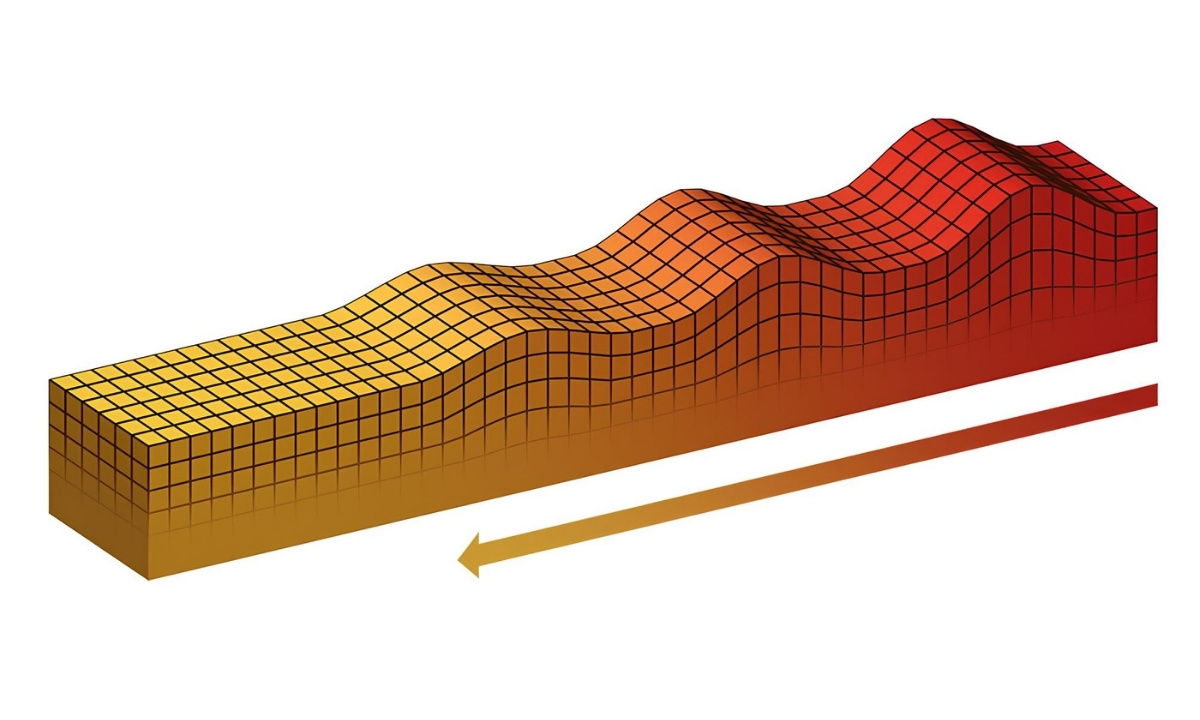
Surface waves are fascinating phenomena that occur at the interface between different mediums, such as air and water. These waves are crucial in understanding various natural events, from ocean waves to seismic activities. But what exactly makes them so interesting? Surface waves travel along the surface of a medium and can be observed in both water and solid materials. They play a significant role in shaping our environment and even in the study of earthquakes. Understanding these waves can help us predict natural disasters and improve safety measures. Ready to dive into some intriguing facts about surface waves? Let's get started!
What Are Surface Waves?
Surface waves are fascinating phenomena that occur at the interface between two different mediums, such as air and water. These waves are crucial in various fields, including oceanography, seismology, and even engineering. Let's dive into some intriguing facts about surface waves.
-
Surface waves travel along the boundary between two different mediums, like the surface of the ocean or the Earth's crust.
-
They are slower than body waves, which move through the interior of a medium.
-
Surface waves can be divided into two main types: Rayleigh waves and Love waves.
-
Rayleigh waves cause both vertical and horizontal ground movement, creating a rolling effect.
-
Love waves move the ground side-to-side, causing more damage during earthquakes.
-
These waves are responsible for most of the shaking felt during an earthquake.
How Surface Waves Affect the Earth
Surface waves play a significant role in shaping the Earth's surface and can have profound impacts on human activities. Here are some facts about their effects.
-
Rayleigh waves can travel great distances, making them useful for studying the Earth's interior.
-
Love waves are named after Augustus Edward Hough Love, a British mathematician who first described them.
-
Surface waves can cause landslides and other ground failures during earthquakes.
-
They can also generate tsunamis when they displace large volumes of water.
-
Engineers must consider surface waves when designing buildings and infrastructure to ensure they can withstand seismic activity.
-
Surface waves can erode coastlines, changing the landscape over time.
Surface Waves in Water
Water waves are a common example of surface waves, and they exhibit unique behaviors that are both beautiful and powerful. Let's explore some facts about water surface waves.
-
Water surface waves are created by the wind blowing across the surface of the water.
-
The size and speed of water waves depend on wind speed, duration, and the distance over which the wind blows (fetch).
-
Tsunamis are a type of surface wave caused by underwater earthquakes, volcanic eruptions, or landslides.
-
The height of a tsunami can reach over 100 feet, causing massive destruction when it reaches the shore.
-
Ripples on a pond are small surface waves created by a disturbance, such as a pebble being dropped into the water.
-
Ocean waves can travel thousands of miles across the sea, carrying energy from one place to another.
Surface Waves in Technology
Surface waves are not just natural phenomena; they also have applications in technology and engineering. Here are some interesting facts about their technological uses.
-
Surface acoustic wave (SAW) devices use surface waves to filter and process signals in electronic devices.
-
SAW devices are used in mobile phones, televisions, and other communication devices.
-
Surface waves are used in non-destructive testing to detect flaws in materials and structures.
-
Engineers use surface wave analysis to study the properties of the Earth's subsurface, aiding in oil and gas exploration.
-
Surface waves are also used in medical imaging techniques, such as ultrasound, to create detailed images of the body's interior.
Fun and Surprising Facts About Surface Waves
Surface waves have some surprising and fun aspects that you might not have known. Let's take a look at some of these lesser-known facts.
-
The longest recorded ocean wave was over 112 feet high, observed during a storm in the North Atlantic.
-
Surface waves can create standing waves, which appear to be stationary, in rivers and other bodies of water.
-
Seiches are a type of standing wave that occurs in enclosed or partially enclosed bodies of water, like lakes or harbors.
-
Surface waves can travel faster in deeper water and slower in shallow water.
-
The study of surface waves helps scientists understand climate change by analyzing wave patterns and their effects on coastal erosion.
-
Surface waves can create beautiful patterns in sand and other granular materials, often seen at the beach or in deserts.
The Final Wave
Surface waves are fascinating. They shape our world in ways we often overlook. From the gentle ripples on a pond to the powerful tsunamis that can reshape coastlines, these waves play a crucial role in our environment. Understanding their behavior helps in predicting natural disasters, improving maritime navigation, and even in designing better coastal structures.
Scientists continue to study surface waves to unlock more secrets about our planet. Their research not only enhances our knowledge but also contributes to safety and innovation. Next time you see waves crashing on the shore, remember the complex science behind them.
Whether you're a student, a curious mind, or someone who loves the ocean, knowing these facts about surface waves enriches your appreciation of nature. Keep exploring, stay curious, and let the waves of knowledge keep rolling in.
Was this page helpful?
Our commitment to delivering trustworthy and engaging content is at the heart of what we do. Each fact on our site is contributed by real users like you, bringing a wealth of diverse insights and information. To ensure the highest standards of accuracy and reliability, our dedicated editors meticulously review each submission. This process guarantees that the facts we share are not only fascinating but also credible. Trust in our commitment to quality and authenticity as you explore and learn with us.
